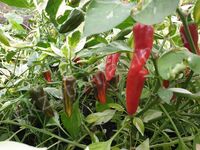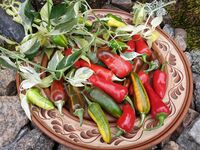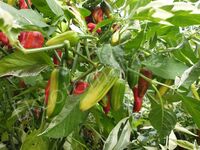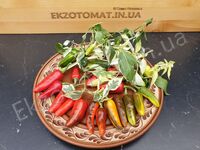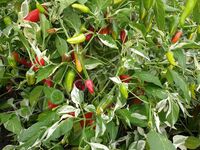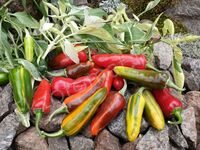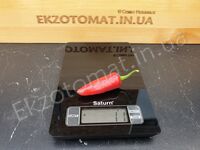Pepper "Fish Pepper"
- Availability: In Stock
2 €
PACKAGING: Sachet Zip-lock 12-15 SEEDS
2. History: An old variety originating from the Caribbean. It was brought to the United States in the nineteenth century where it became popular in the Mid-Atlantic (in particular, in Baltimore and Philadelphia). Afro-Americans began using it for fish, oyster and crab dishes (hence the name 'Hot Fish'). But the variety lost its popularity by the twentieth century. Its seeds were saved by Horace Pippin, an Afro-American painter from Pennsylvania, who provided the seeds to H. Ralph Weaver, a beekeeper, in exchange for honey bees to treat arthritis. The seeds of the Hot Fish pepper stayed within the beekeeper’s family for a long time until Weaver’s grandson, William Woys Weaver, introduced this variety to the public via the Seed Savers Exchange Yearbook in 1995. Scoville scale: about 5,000-30,000 SHU.
3. Plant Specifications: Mid-season. Suitable for growing in a green house, outdoors and in large pots. Short plant, growing 1-1.6 feet (30-50 cm) tall. The foliage is variegated and multicolored. The leaves are green with white streaks and marbling. Very decorative!
4. Training Instructions: No staking is required as the bush is firm.
5. Shape and Weight: Smooth tapered fruits. Weight: 0.3-0.4 oz. (8-12 g). The fruits are 2.4-3 in. (6-8 cm) long.
6. Color: The fruits are pale green with yellow stripes at the mature-green stage. They turn dark green with orange stripes at a later stage. The dark green color turns to brown while the orange becomes carrot-colored. Finally, the fruits turn completely red without any stripes when fully ripe. The bush can be really beautiful and decorative having green and white leaves and multicolored striped fruits!
7. Flavor Profile: Very hot with a slightly sweet taste and pepper flavor.
8. Culinary Use: Perfect for eating fresh or making sauces and pickles traditionally used with fish dishes. Of course, this pepper can also be added to meat dishes, marinated and pickled. Moreover, you can dry the fruits as whole or dry them to make paprika.


